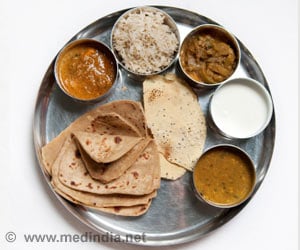In the last decade, India has experienced declines in maternal, infant, and under-five mortality rates.

‘Public awareness plays a crucial role in fostering healthy habits, necessitating the dissemination of accurate information. #publichealth #healthyliving #medindia’





Kalita mentioned "Investing in health and hygiene is not just a moral imperative, it is an economic necessity. He also added “Beyond being just buzzwords, health and hygiene are the pillars upon which prosperous societies are built. The journey has been arduous yet inspiring. From battling infectious diseases to embracing preventive healthcare, the nation has made significant strides." Over the past decade, we have witnessed a reduction in maternal mortality rate, infant mortality rate, and mortality rate among children under five years of age."These achievements underscore the effectiveness of the robust healthcare initiatives and the importance of prioritising hygiene practices. The various initiatives and programmes of the government has transformed the society into a health conscious one."
"As we strive for universal health coverage, it is imperative to empower communities with knowledge and resources to safeguard their well-being. The government has increased the number of medical colleges, and we will have one medical college in every district now. The shortage of doctors in the rural areas will soon be a thing of the past," Kalita added.
Delivering the welcome address, Anil Rajput, Chairperson, ASSOCHAM National CSR Council, said, “The ’Illness to Wellness’ initiative was launched in 2014 with the belief that we have the scientific knowledge to create a world in which most of the diseases could be either eliminated or controlled by preventive healthcare awareness.
Empowering Health and Wellness
"We are driven by a commitment to promote health and wellness for all with a focus on empowerment, education, collaboration, and sustainable impact. Over the years, we have endeavoured to maximise outreach and impact, from organising camps and awareness campaigns on a slew of critical ailments to holding regular webinars on key health developments with the overarching objective of providing remedies and motivation.” The ’Illness to Wellness’ campaign extends its reach to young minds through initiatives such as the inter-school drawing competition, with artwork from the latest competition showcased at the Summit.Engaging 57 schools and involving 10,000 students, the competition promoted awareness of crucial topics, including health, hygiene, and air pollution. Delivering the keynote address, Ashok Seth, Chairman, Fortis Escorts Heart Institute, New Delhi, said, “Wellness is a state of mind, spirit and body and illness is a deficiency of social, physical, mental, and spiritual factors. A new India for the world has to encompass health towards wellness. "The youth and women are the present and future of our country. We have to combine all efforts to deliver wellness and beyond. The 20th century was the most scientific 100 years ever lived by mankind. A microbe and the Covid pandemic showed humankind the limits of its power."
Advertisement
Anil Agarwal, Medical Director, Govind Ballabh Pant Institute of Postgraduate Medical Education Research, Government of NCT of Delhi, said in his address, "Early detection is the cornerstone of treatment and seeking early medical intervention is advisable. The focus should be on the silent killers and vulnerable groups in raising public awareness. Reaching out to school children is a good approach, as the younger you start, the more ingrained will the awareness be. Imparting basic life-saving skills to the students in schools and colleges will be very effective in combating sudden death.”
Advertisement
- India achieves WHO recommended doctor population ratio: A call for paradigm shift in public health discourse! - (https://www.ncbi.nlm.nih.gov/pmc/articles/PMC6259525/)
Source-IANS









